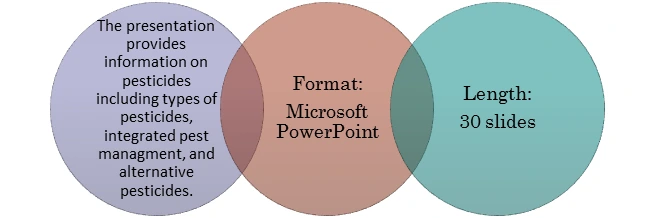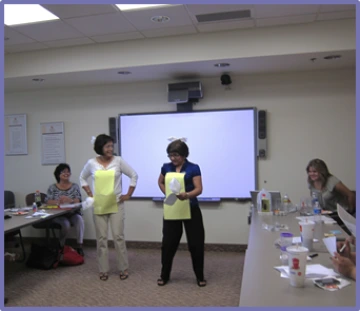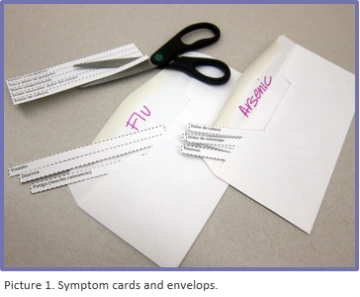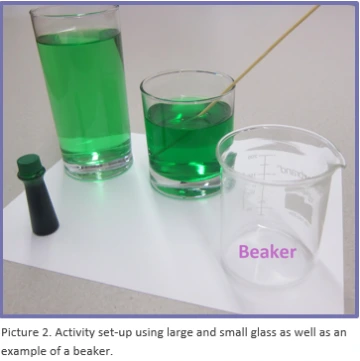Video Resources – More Information on Arsenic
This section provides video suggestions that may help in preparation for the training or can be utilized as a training tool to help trainees understand theme concepts. Some of the videos can also be used as visual demonstrations when you are not able to set-up real-life activities. Here are some suggested video resources that contain relative information, but please feel free to research others:
Dartmouth University: In Small Doses
Dartmouth University: Arsenic Remediation in Nepal
U.S. Environmental Protection Agency: Introduction to Arsenic Mitigation
Visual Aids – PowerPoint Presentation

The PowerPoint presentation provided is a prepackaged visual aid that can be utilized to train promotores on the respective theme of the module. It is meant to be adaptable and should be modified according to the audience needs and knowledge base. The information in the presentation is similar to that in the “background” section of this module. Certain terms and/or ideas may not be in the “background” section, thus a separate glossary is provided in this section to assist in defining.
Concept Glossary
- Bacteria, fungi, and some plants convert inorganic arsenic (toxic form) to organic arsenic (less toxic form) compounds. They do this chemically by gradually transforming it into a less toxic form of arsenic.
- The Borgias – They were Italian assassins during the 15th and 16th centuries that utilized arsenic to poison people. The goal of their assassinations was for to gain both politically and financially.
- Napoleon – He was been rumored to die of arsenic poisoning in 1821. Samples were taken of his hair and analyzed giving rise to the poisoning theory. Yet, this is a still debated theory.
- Arsenic and Old Lace – This is a play written in 1939 by American playwright Joseph Kesselring. In the play, the main character’s aunts have taken to murdering lonely old men by poisoning them with elderberry wine laced with arsenic, strychnine, and cyanide.
- Gallium arsenide – Fundamental component in the semiconductor industry. Items such as digital mobile phones, GPS navigation units, and wireless networks have driven demand for semiconductor devices.
Training Assessments and Extensions
- Have the promotores compare and contrast chronic and acute arsenic exposure health affects. They can take turns coming up to the board or easel pad to write down what they come up with. Also, have them discuss the differences between chronic and acute exposures.
- View the video “Agua: Cada Gota es el Universo” or “In Small Doses” and have them discuss maximum contaminant levels for drinking water when it comes to arsenic, what are the sources of arsenic contamination that are described, and arsenic toxicity health effects discussed.
- The promotores will identify the differences between inorganic and organic arsenic. They can take turns coming up to the board or easel pad to write down what they come up with.
- Brainstorm with the promotores how they will provide arsenic information to their clients, neighbors, or family. Sketch with them some of the messages or pieces of information that they found most important and can be easily translated to community members. Have them write on the board or easel pad some of these messages.
Concept Activities
These complimentary activities were designed to provide a hands-on component to the module trainings. They may be used to demonstrate a concept to visual learners or reinforce ideas presented to ensure comprehension. The activities have been divided into three sections (warm up, activity, and wrap up) in order to guide promotores through the concept(s). Also, some activities have “cheat sheets” for the trainer or handout materials that can be copied and handed out to the promotores at the training. Similar to other components in these modules, they may be adapted as needed considering training time, knowledge base, or available materials.
Activity 1. Arsenic, As Seen On TV
Materials
- Note pads (one note pad per promotor pair or group)
- Writing utensils (pencil or pen)

Warm Up
Ask the promotores to take a moment to think about the information that they have learned about arsenic. Have them jot down on a piece of paper some of the facts or pieces of information that they remember from the training. After they are finished, let them know that they will be developing public service announcements concerning arsenic. These announcements will be shown to people in their community on the local television channel.
Activity
- Divide the promotores into pairs or groups.
- Pass out the note pads and writing utensils to the different groups.
- Inform the promotores that they will be developing two-minute public service announcements focused on arsenic. They can select whatever tone (e.g. humorous, serious, etc.) and information (e.g. only health, combination of drinking water and exposure routes, etc.) they feel appropriate for their community who will be watching them. Emphasis to them that they can be as creative as they would like, but they have to make sure to stay within the two-minute time frame.
- Ask them the following questions in order to help them better deliver their message (they can briefly discuss them with their partner or group members):
- Who are they talking too? Who is the audience they are targeting?
- Why does this topic matter to this audience? Why should this topic matter?
- What do they want them to “act on” when it comes to arsenic?
- Have them start working on a draft script or layout of the public service announcement using the note pads you have provided them. Give them 10 minutes to develop their ideas.
- When they have completed their scripts or layouts, have them come up to the front of the room and describe or act out their public service announcements.
Wrap Up
Ask the promotores what were their initial reactions to the public service announcements. Which public service announcement stood out the most to them? What information was most frequently provided? Discuss these and other questions that come up.
Activity 2. Arsenic Poisoning or Seasonal Flu?
Materials
- Symptoms Cards: “Arsenic Poisoning” and “Seasonal Flu” set (make copies of each and cut along the dotted lines to make strips of each symptom)
- Envelopes (place the cut Symptom Cards into its own envelop and write on the inside flap weather the symptoms are for “Arsenic” or “Flu”)

Warm Up
Ask the promotores, “How many of you have ever been sick with the flu?” Explain to them that the flu (influenza) is a contagious respiratory illness that has affected everyone at one time or another (either by having had it or knowing someone who has had it). Tell the promotores that a virus causes the flu (influenza virus types A, B, and C), which is thought to spread mainly by droplets in cough, saliva, and sneeze.
Activity
- Tell the promotores that they will be “symptoms detectives” for this activity. Have them think about some of the symptoms they learned could result from arsenic poisoning in the training and some of the symptoms that they or others around them have experienced from the flu.
- Ask the promotores for two volunteers who will be displaying the symptoms (patients).
- Once you have the volunteers, have them come to the front of the room. Provide them with an envelope and tell them not to open them yet. Explain to them that in the envelopes they will find symptoms to either arsenic poisoning or the flu. They will be acting out the symptoms so the “symptom detectives” can guess if they are either sick because of arsenic or the flu.
- Have the volunteers open the envelops with the Symptom Cards and select the first symptom at random. They should act out the symptom simultaneously (or they can say it out loud if they can’t act it out).
- Next, have them again select another symptom and act it out or say it out loud.
- After several iterations, check-in with the “symptom detectives” to find out if they have a clue which one is arsenic poisoning or the flu.
- Continue this process until all the symptoms have been removed from the envelopes or the “symptom detectives” have confidently guessed which “patient” has arsenic poisoning or the flu.
Wrap Up
Have them discuss their observations of the symptoms for arsenic poisoning and the flu. Are the symptoms similar? Which symptoms are different?
Activity 3. Who is exposed?
Materials
- 400 milliliter (mL) beaker (you can also use a large glass alternatively)
- 100 mL beaker (you can also use a small glass alternatively)
- 400 mL of water
- Food coloring
- Two stir sticks
- One sheet of white paper

Warm Up
Remind the promotores that the main route of arsenic exposure in humans is water. Mention that there are studies under way that are evaluating exposure via food (rice, vegetables) and dust (mine tailings). Let them know that what ever the exposure route may be, an important part of the resulting health effects is susceptibility. This may include dose, duration, lifestyle, and genetics. Explain to them that the activity that they will be participating in will have them look at another important susceptibility factor, which is age (child versus adult).
Activity
- Fill the 400 mL and 100 mL beaker about ¾ full with water (this would be 300 mL for the 400 mL beaker and 75 mL for the 100 mL beaker).
- Tell the promotores that the 400 mL beaker represents an adult and the 100 mL beaker is a child.
- Put the same amount of food coloring in each of the beakers (one or two drops).
- Stir one of the beakers with one stir stick while the other beaker is stirred with the other stick.
- Ask the promotores what they observe. Is there a color different (small beaker is darker while the larger one is lighter)?
- Place the white sheet of paper behind the beakers to make it easier for them to see the color differences.
- Ask them who is most affected? Why?
Wrap Up
State to the promotores that this is a demonstration on the importance of size or weight when it comes to human exposure. Repeat once again to them that children are most affected due to their size and weight.

